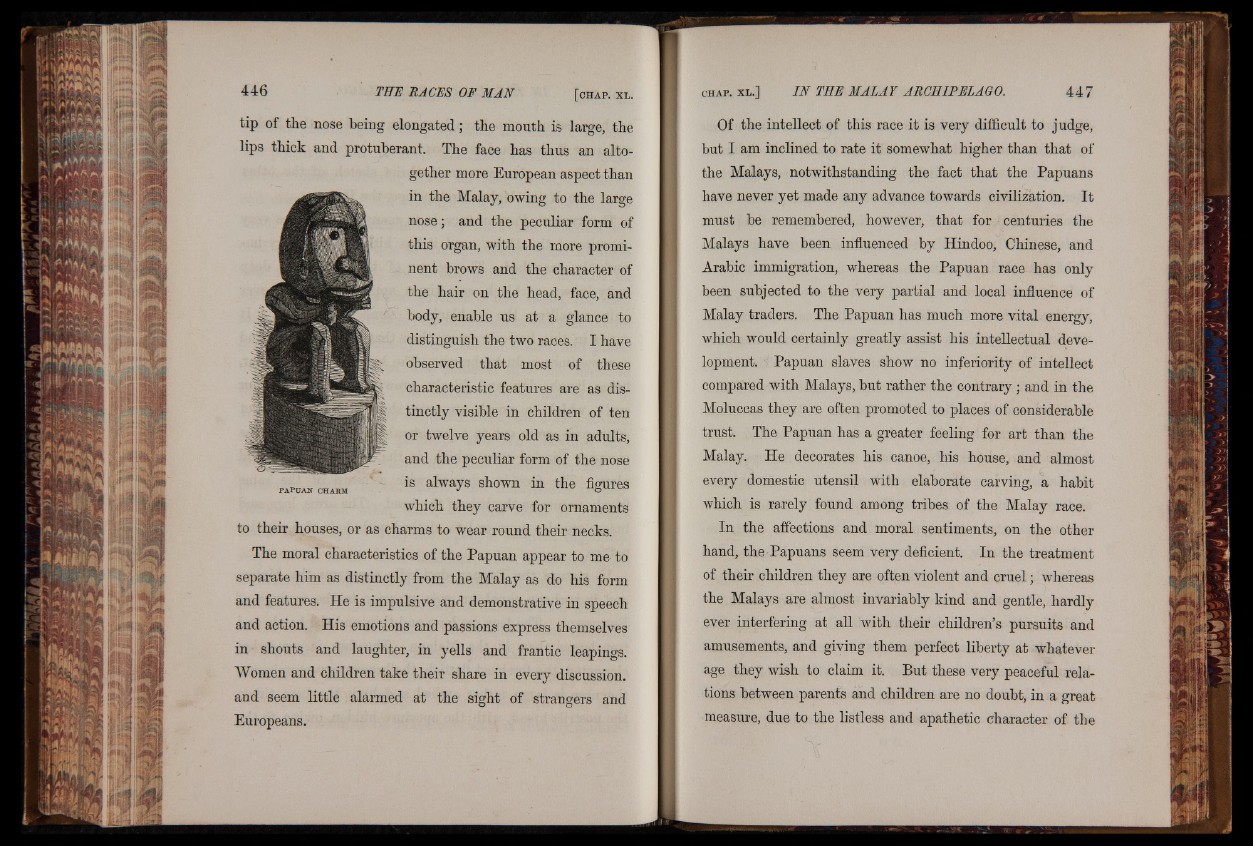
tip of the nose being elongated; the mouth is large, the
lips thick and protuberant. The face has thus an altogether
more European aspect than
in the Malay, owing to the large
nose; and the peculiar form of
this organ, with the more prominent
brows and the character of
the hair on the head, face, and
body, enable us at a glance to
distinguish the two races. I have
observed that most of these
characteristic features are as distinctly
visible in children of ten
or twelve years old as in adults,
and the peculiar form of the nose
is always shown in the figures
which they carve for ornaments
PAPUAN CHARM
to their houses, or as charms to wear round their necks.
The moral characteristics of the Papuan appear to me to
separate him as distinctly from the Malay as do his form
and features. He is impulsive and demonstrative in speech
and action. His emotions and passions express themselves
in shouts and laughter, in yells and frantic leapings.
Women and children take their share in every discussion,
and seem little alarmed at the sight of strangers and
Europeans.
Of the intellect of this race it is very difficult to judge,
but I am inclined to rate it somewhat higher than that of
the Malays, notwithstanding the fact that the Papuans
have never yet made any advance towards civilization. It
must be remembered, however, that for centuries the
Malays have been influenced by Hindoo, Chinese, and
Arabic immigration, whereas the Papuan race has only
been subjected to the very partial and local influence of
Malay traders. The Papuan has much more vital energy,
which would certainly greatly assist his intellectual development.
Papuan slaves show no inferiority of intellect
compared with Malays, but rather the contrary; and in the
Moluccas they are often promoted to places of considerable
trust. The Papuan has a greater feeling for art than the
Malay. He decorates his canoe, his house, and almost
every domestic utensil with elaborate carving, a habit
which is rarely found among tribes of the Malay race.
In the affections and moral sentiments, on the other
hand, the Papuans seem very deficient. In the treatment
of their children they are often violent and cruel; whereas
the Malays are almost invariably kind and gentle, hardly
ever interfering at all with their children’s pursuits and
amusements, and giving them perfect liberty at whatever
age they wish to claim it. But these very peaceful relations
between parents and children are no doubt, in a great
measure, due to the listless and apathetic character of the